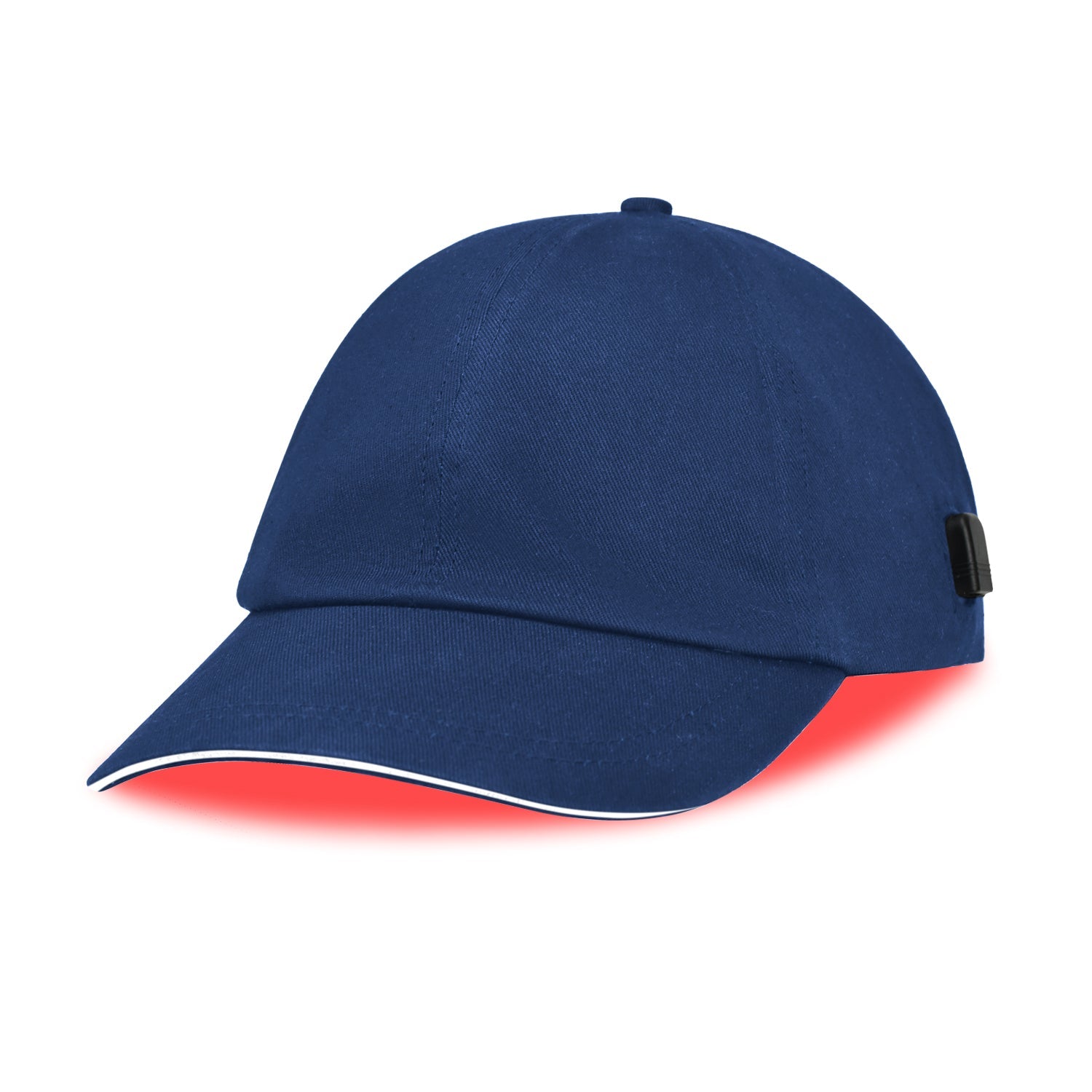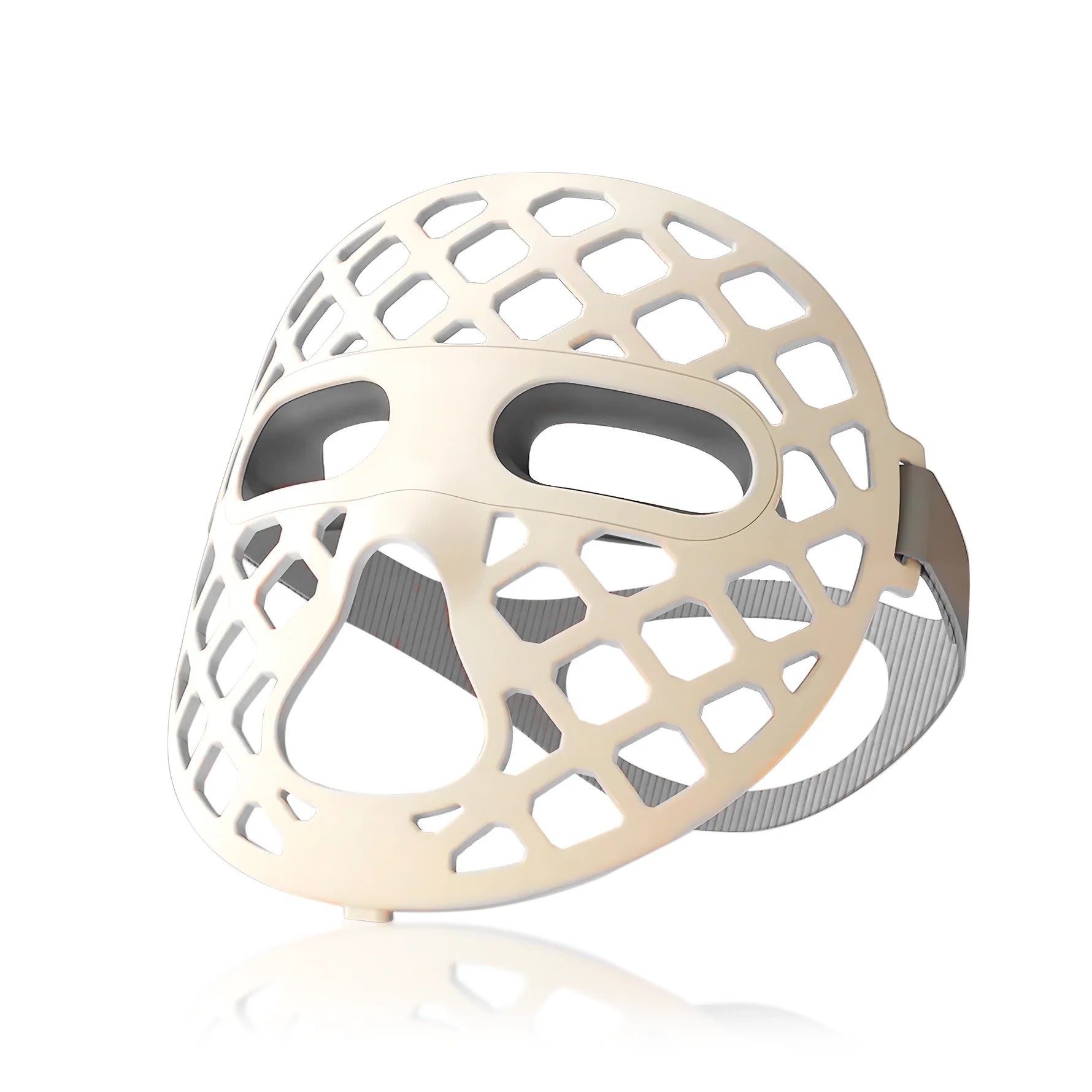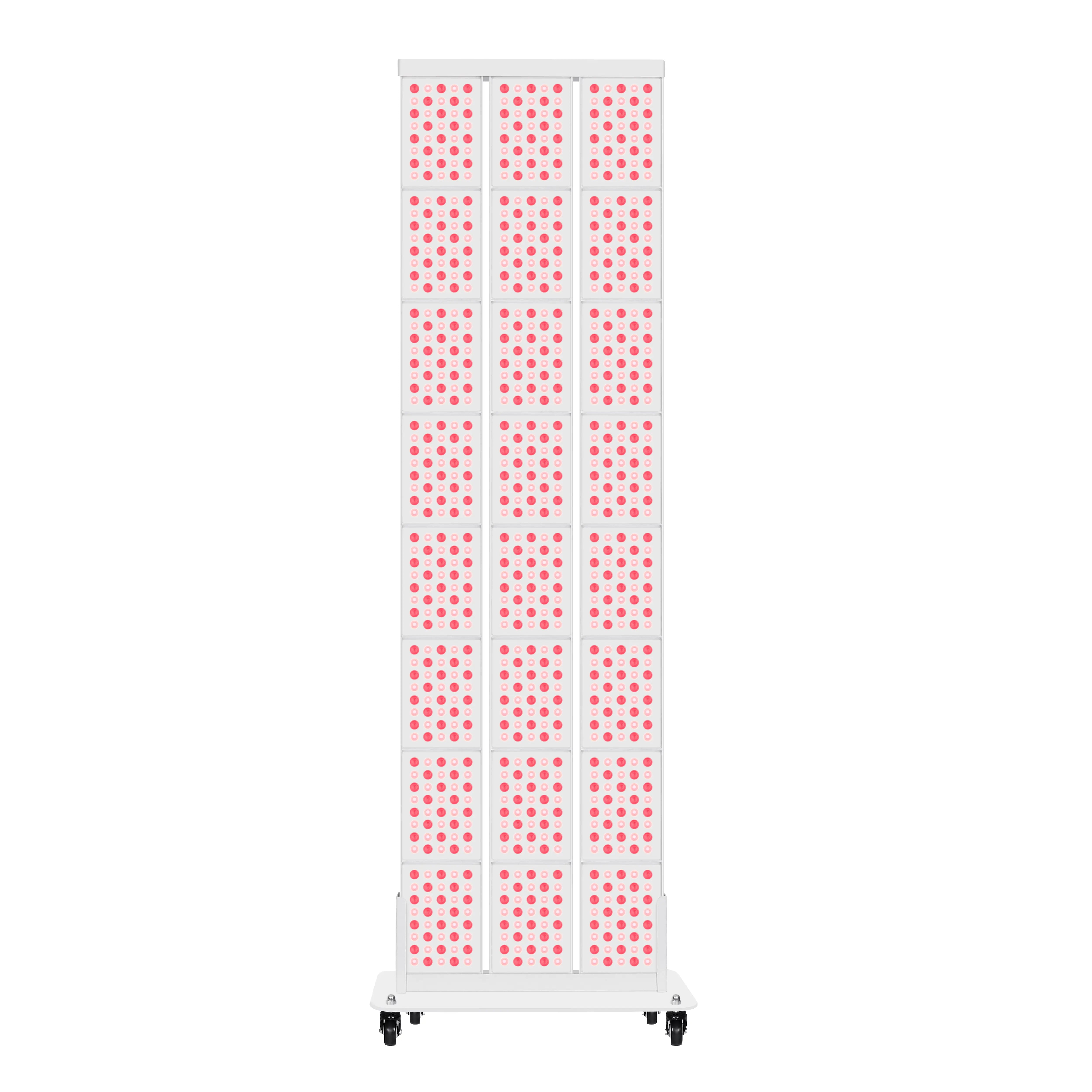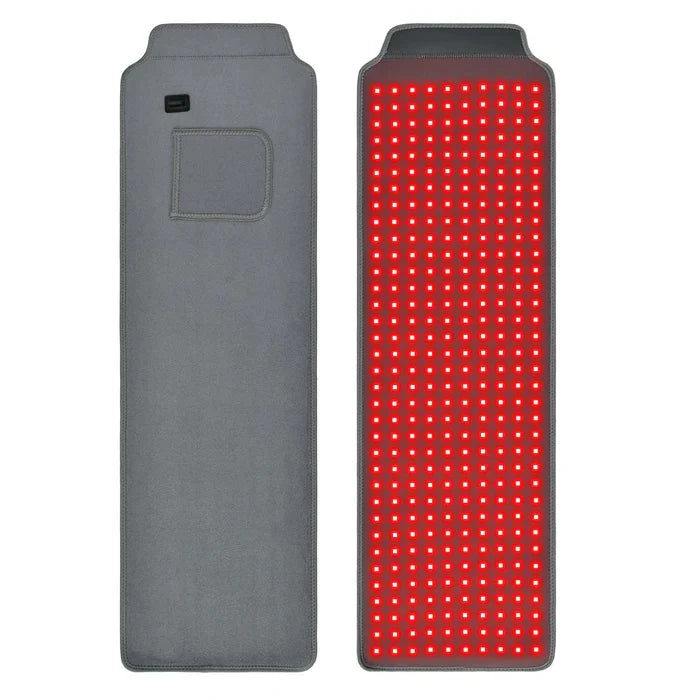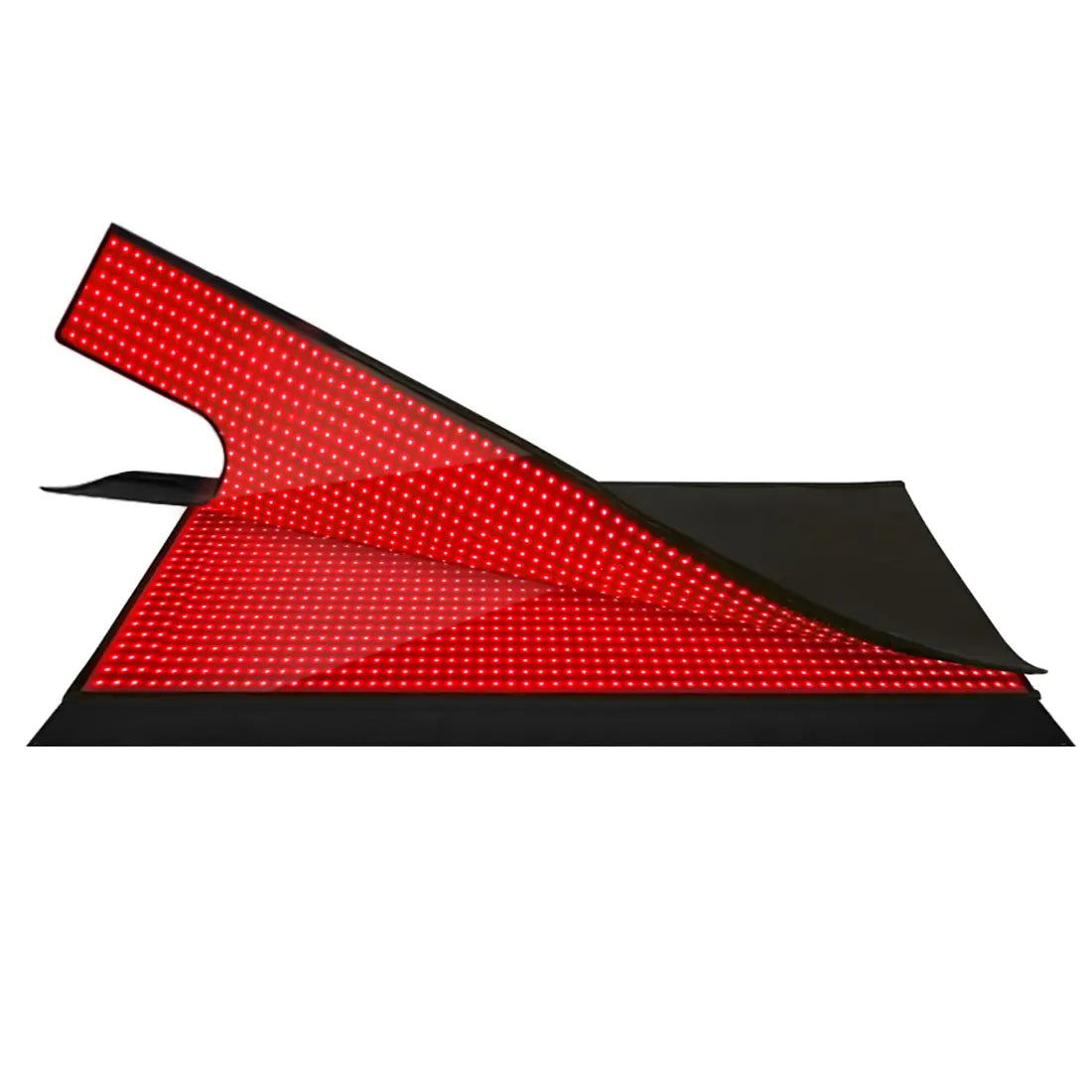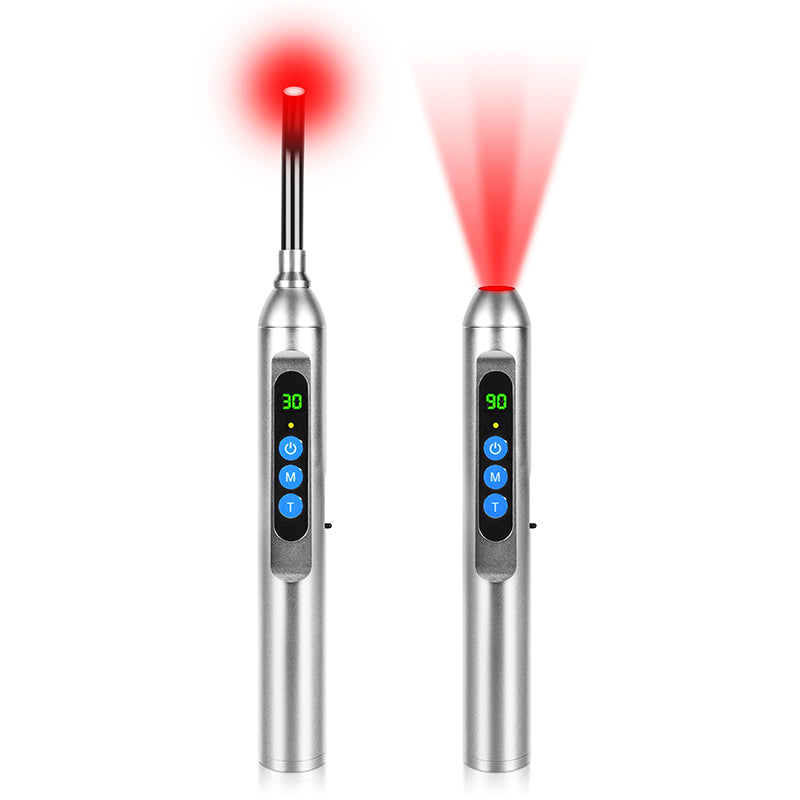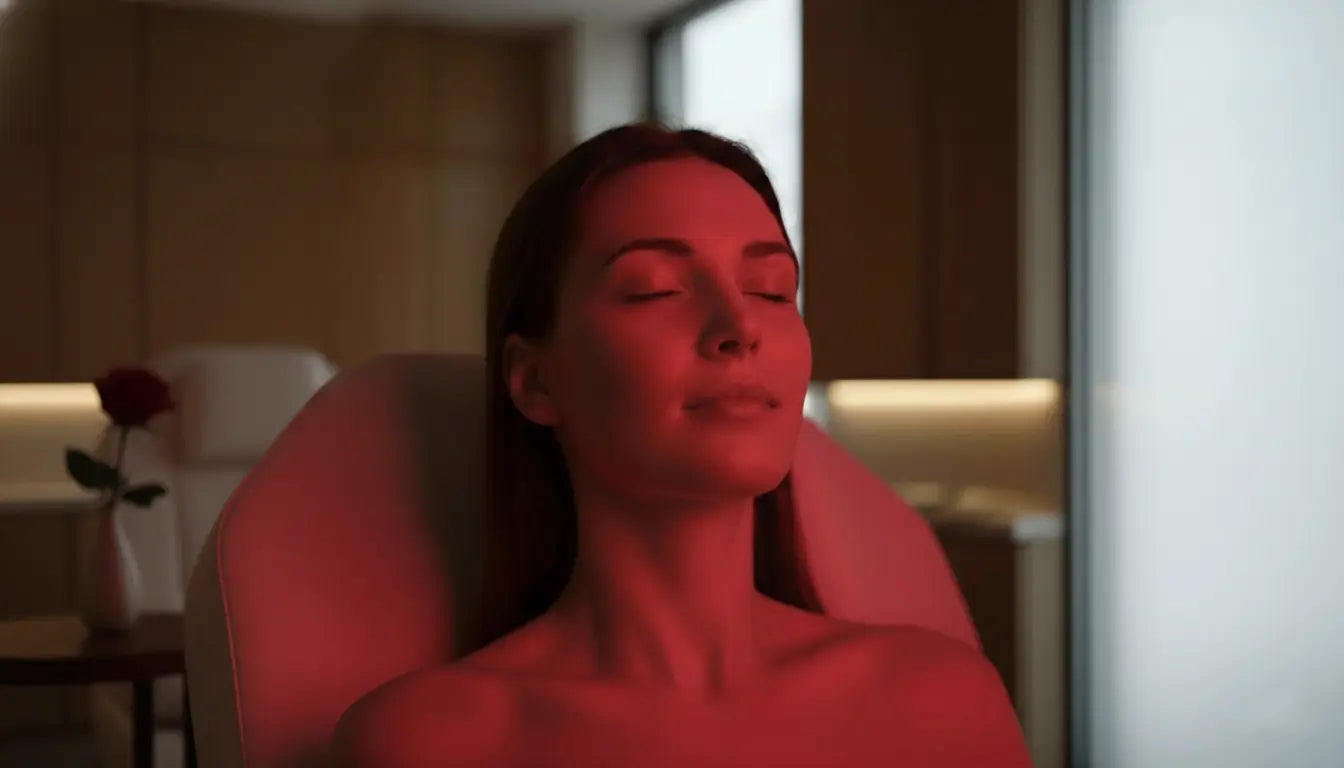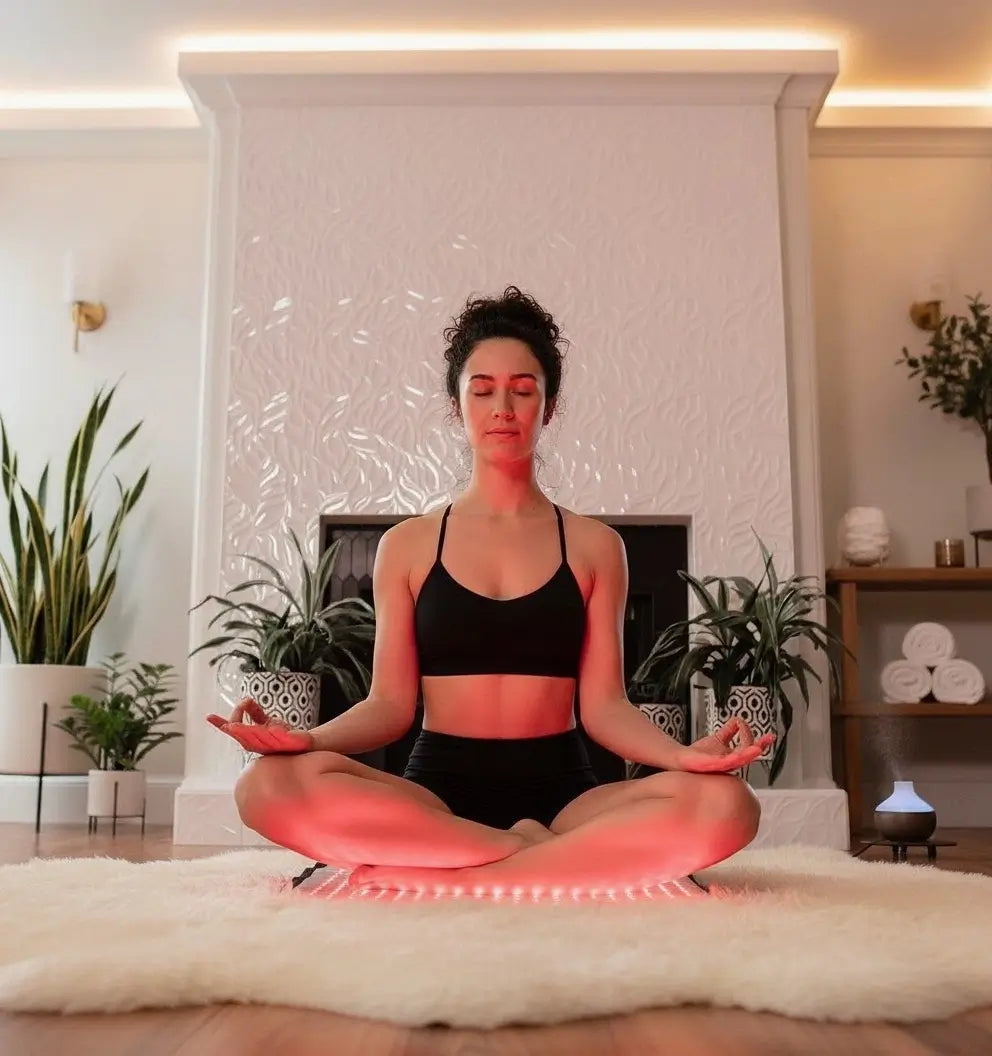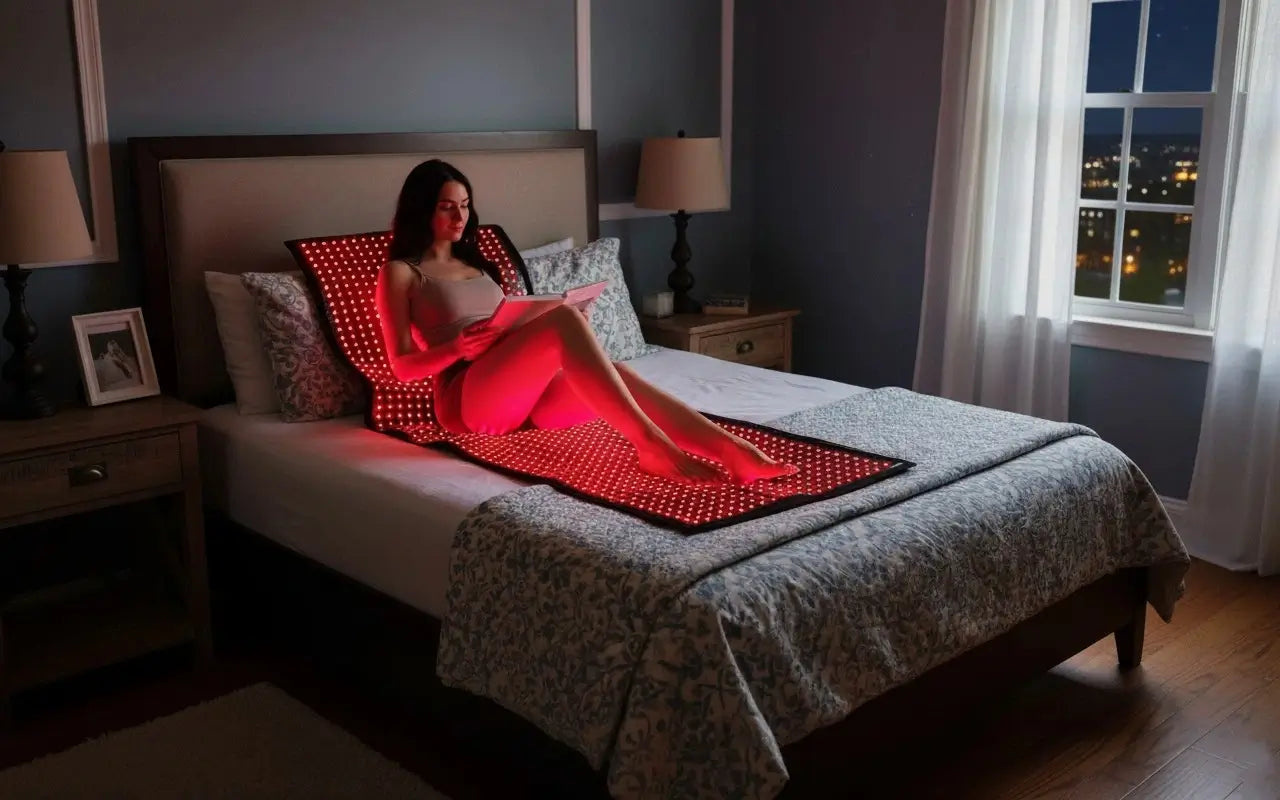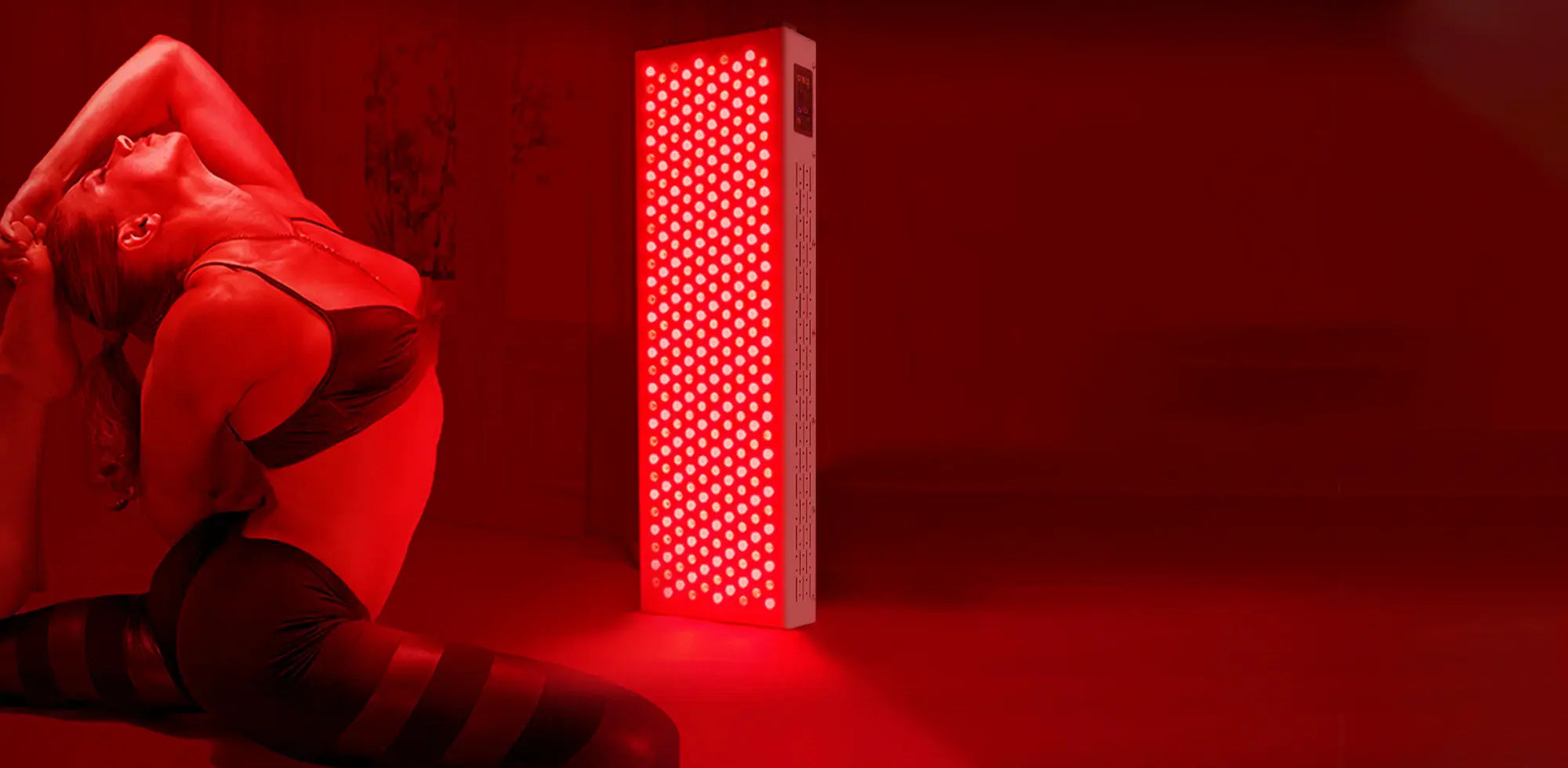Quick Answer
No. Used as directed, red light therapy isn’t inherently harmful to healthy eyes. Keep eyes closed during facial sessions, avoid staring into LEDs, and follow the manual. If you have eye disease or take photosensitizing medications, seek medical advice first.

Home users are turning to red light therapy devices for skin, recovery, and general wellness. Alongside that trend, eye safety questions keep coming up. This article sorts the real risks from the rumors, explains how therapeutic red and near-infrared light differs from hazardous wavelengths, and gives you a clear checklist for safe use with red light therapy at home devices.
Myth 1: “All Bright Light Damages Your Eyes” With Red Light Therapy Devices
“Bright” is an imprecise label. Eye risk depends on wavelength, intensity, and exposure time. Ultraviolet and portions of high-energy blue can drive photochemical damage under certain conditions. Therapeutic red and near-infrared sit in a lower-energy, non-ionizing window used for photobiomodulation. That is a different exposure category with different limits.
Well-designed red light therapy devices disclose their wavelengths and are tested using lamp safety frameworks such as IEC 62471. Those evaluations look at retinal blue-light hazard, thermal loading, and near-infrared exposure over defined distances and durations. A device that meets these requirements and is used as directed has a risk profile that is not comparable to unfiltered UV sources or sun gazing. The practical takeaway is simple: check wavelengths, verify that safety testing is documented, and follow the manual for distance and time.

Myth 2: “You’ll Burn Your Retinas” With Red Light Therapy Devices
Photobiomodulation works primarily through nonthermal cellular signaling after chromophores absorb red or near-infrared photons. That mechanism is distinct from heat-based therapies. Consumer LED systems also constrain irradiance and session length through fixed timers and guidance on working distance. Under typical settings, the hardware is not delivering a thermal burn to ocular tissues.
Good habits still matter. Avoid staring directly into emitters at close range. Keep sessions timed. If you feel visual strain or afterimages, increase the distance or reduce the duration at the next session. These rules are common sense around any bright source and are easy to follow with red light therapy devices.
Myth 3: “Blackout Goggles Are Mandatory” With Red Light Therapy Devices
One size rarely fits all. Facial sessions with red or near-infrared can be conducted with eyes gently closed, following the manual, and many users find this comfortable. People who are light sensitive may prefer soft eye shields for glare comfort. If a product includes blue-light modes aimed at acne care, stronger eye protection is often advised. The right choice depends on wavelength mix, intensity, and your sensitivity, not on a blanket rule that applies to every situation or every device.
When in doubt, assess your own comfort. If brightness feels distracting, add simple, non-occlusive eye covers. If you prefer an open-eye routine for a red light therapy device for the face, keep viewing away from the emitters and maintain the recommended distance. This approach is particularly relevant for users of modern LED therapy masks for skin rejuvenation, which are designed for comfort and ease of use.

When to Be Cautious With Red Light Therapy
Most healthy adults can use consumer systems safely by following instructions. A few situations call for extra care and sometimes a conversation with a clinician:
- Photosensitizing medications or topicals. Certain antibiotics, dermatology prescriptions, and some supplements can heighten light sensitivity. If any of these are part of your routine, ask your prescriber before facial sessions.
- Existing eye disease or recent eye procedures. Conditions involving the retina, severe dry eye, or recent surgery change risk tolerance. An ophthalmology team can provide tailored parameters or advise against use.
- Light-sensitive migraine or seizure disorders. Bright or flickering light can be a trigger. Discuss device flicker characteristics and session design with a clinician who knows your history.
- Children and clinical eye treatments. Research on low-level red light for pediatric myopia belongs in medical settings with dosing and monitoring. Consumer gear is not a substitute for clinical protocols at home.
Scope. Red light therapy at home devices serve cosmetic and wellness goals for healthy adults who can follow instructions; diagnosis, pediatric care, and post-procedure management belong to clinicians who set dosing and monitor progress.
Choose Reputable, FDA-Cleared Red Light Therapy Devices And Follow Simple Use Rules
A little structure goes a long way. Learning about our commitment to quality can help you choose a device with confidence. Use this selection and usage checklist to keep sessions safe and productive with red light therapy devices.
How to Choose
- Technical transparency. Look for clearly stated wavelengths in the therapeutic red and near-infrared range, published irradiance at a defined distance, and built-in timers.
- Safety evaluation. Favor devices that state compliance with recognized lamp safety testing and that include guidance on session time and working distance.
- Regulatory clarity. If a product claims a medical benefit, check for FDA 510(k) clearance. Clearance indicates substantial equivalence to a predicate for the intended use. It is different from approval and still useful to verify.
- Form factor fit. Panels cover larger areas. Masks streamline facial routines. Handhelds suit spot work. The best red light therapy device is the one you can use consistently without strain. For example, red light therapy panels for full-body wellness are ideal for covering large muscle groups, while masks target facial skin.
How to Use
- Start conservatively. Begin with the manual’s baseline for distance and time. Most users do well with short, timed sessions several days per week, then reassess comfort and skin response after a few weeks.
- Frequency. For most at-home devices, start with short, timed sessions 3–5 days a week for several weeks, then adjust by comfort and results as your manual suggests. This answers the practical question of how often red light therapy can be used while keeping the plan device-specific.
- Protect comfort. Keep eyes gently closed during facial sessions. Add light eye coverings if glare bothers you. If a device includes blue-light modes, wear the eye protection provided by the manufacturer.
- Mind the dose window. Photobiomodulation benefits tend to follow a window of useful dose. Increasing duration beyond the tested settings does not guarantee better results and can increase discomfort.
- Track and adapt. Keep notes on skin changes, eye comfort, and sleep patterns. Adjust only one variable at a time: distance, duration, or frequency.
Quick Reference Table
| Do This | Be Cautious With |
| Verify wavelengths, irradiance at a stated distance, and timing features | Use while on photosensitizing medications without medical guidance |
| Follow the manual’s distance and time | Extending sessions because immediate results feel slow |
| Keep eyes closed during face sessions; add light eye covers if sensitive | Using consumer gear after recent eye surgery or for pediatric eye care |
| Reassess comfort every few weeks and adjust one variable at a time | Ignoring persistent glare, dryness, or headaches |
图片4:An infographic of Do's and Don'ts for red light therapy eye safety, including tips like following the manual and avoiding use with photosensitizing medications.
A Clear Path to Comfortable, Safer Use
Eye safety with red light therapy devices becomes manageable once you separate wavelength facts from rumors and anchor your routine to tested parameters. Choose a device that tells you exactly what it emits and how to use it. Keep sessions short and timed, maintain the recommended distance, and keep eyes closed during facial work unless your manual specifies otherwise. Add simple eye covers if you are sensitive to brightness. For anyone with eye disease, a light-sensitive condition, or recent procedures, a brief check-in with a clinician can prevent problems and personalize your plan. With those steps in place, red light therapy devices can be part of a thoughtful home routine that respects comfort and supports your goals.
FAQs about Red Light Therapy and Eye Safety
Q1. Can I use red light therapy with contact lenses?
You can, but many users remove lenses to reduce dryness and glare. If you keep them in, lubricate with preservative-free drops afterward and avoid staring into emitters.
Q2. What room setup reduces eye discomfort during sessions?
Use gentle ambient lighting rather than a dark room. Position the device slightly off-axis and at the recommended distance. This reduces contrast and glare while maintaining effective exposure.
Q3. Should I wear skincare around the eyes during sessions?
Clean the eye area first. Avoid retinoids, exfoliating acids, or fragranced creams on eyelids before treatment. Afterward, apply a gentle moisturizer; sunscreen is only for outdoor sun exposure, not red/near-infrared light.
Q4. Any positioning tips for face devices if I dislike goggles?
Keep eyes closed and tilt the panel or mask 10–15 degrees off your direct line of sight. Use a stand to lock the distance so LEDs never align straight with your eyes.
Q5. What symptoms mean I should stop and seek care?
Stop immediately if you notice sudden vision loss, new flashes or floaters, severe eye pain, or persistent double vision. Contact an eye-care professional before resuming any sessions.

